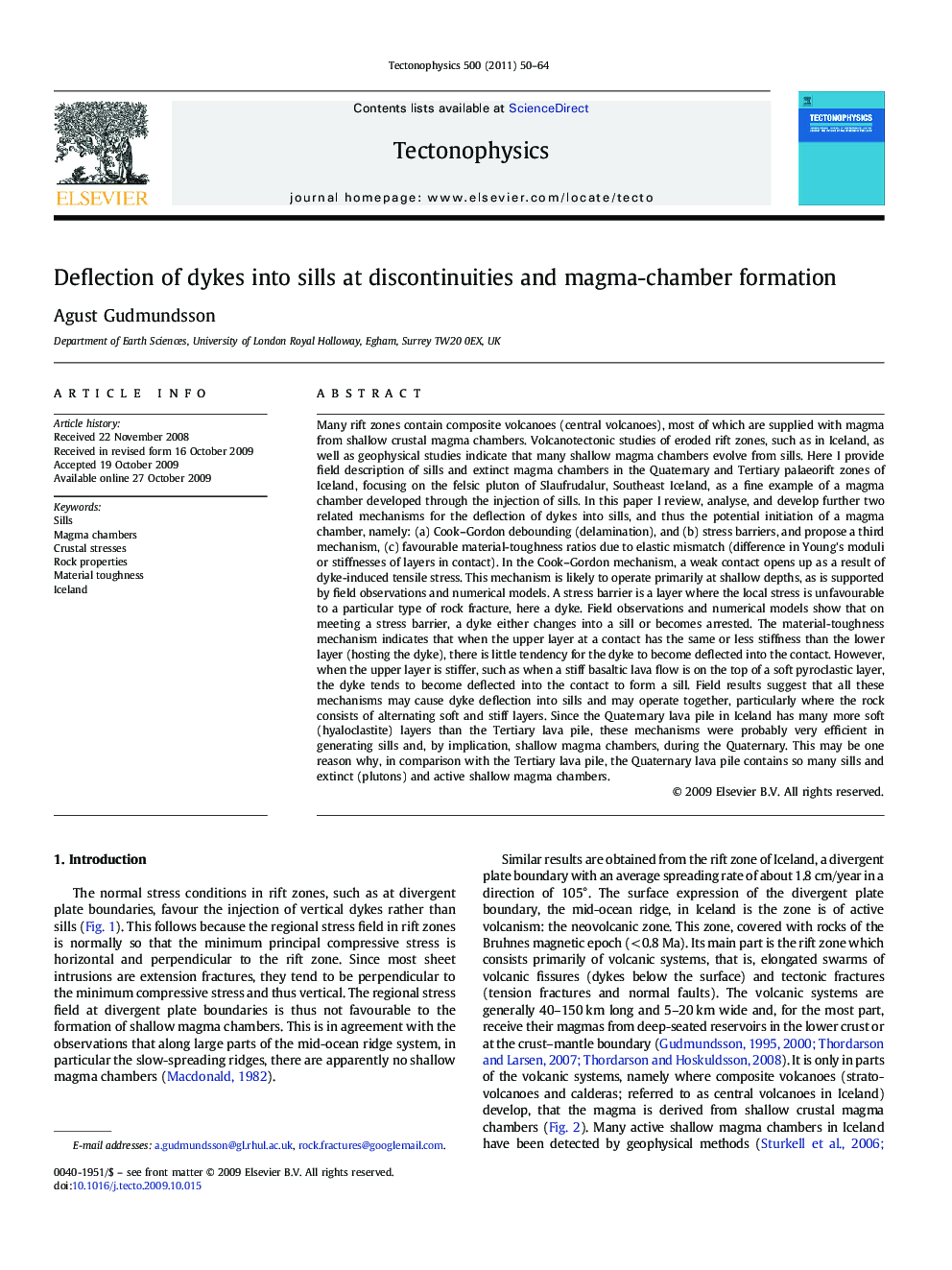| کد مقاله | کد نشریه | سال انتشار | مقاله انگلیسی | نسخه تمام متن |
|---|---|---|---|---|
| 4693196 | 1636851 | 2011 | 15 صفحه PDF | دانلود رایگان |

Many rift zones contain composite volcanoes (central volcanoes), most of which are supplied with magma from shallow crustal magma chambers. Volcanotectonic studies of eroded rift zones, such as in Iceland, as well as geophysical studies indicate that many shallow magma chambers evolve from sills. Here I provide field description of sills and extinct magma chambers in the Quaternary and Tertiary palaeorift zones of Iceland, focusing on the felsic pluton of Slaufrudalur, Southeast Iceland, as a fine example of a magma chamber developed through the injection of sills. In this paper I review, analyse, and develop further two related mechanisms for the deflection of dykes into sills, and thus the potential initiation of a magma chamber, namely: (a) Cook–Gordon debounding (delamination), and (b) stress barriers, and propose a third mechanism, (c) favourable material-toughness ratios due to elastic mismatch (difference in Young's moduli or stiffnesses of layers in contact). In the Cook–Gordon mechanism, a weak contact opens up as a result of dyke-induced tensile stress. This mechanism is likely to operate primarily at shallow depths, as is supported by field observations and numerical models. A stress barrier is a layer where the local stress is unfavourable to a particular type of rock fracture, here a dyke. Field observations and numerical models show that on meeting a stress barrier, a dyke either changes into a sill or becomes arrested. The material-toughness mechanism indicates that when the upper layer at a contact has the same or less stiffness than the lower layer (hosting the dyke), there is little tendency for the dyke to become deflected into the contact. However, when the upper layer is stiffer, such as when a stiff basaltic lava flow is on the top of a soft pyroclastic layer, the dyke tends to become deflected into the contact to form a sill. Field results suggest that all these mechanisms may cause dyke deflection into sills and may operate together, particularly where the rock consists of alternating soft and stiff layers. Since the Quaternary lava pile in Iceland has many more soft (hyaloclastite) layers than the Tertiary lava pile, these mechanisms were probably very efficient in generating sills and, by implication, shallow magma chambers, during the Quaternary. This may be one reason why, in comparison with the Tertiary lava pile, the Quaternary lava pile contains so many sills and extinct (plutons) and active shallow magma chambers.
Journal: Tectonophysics - Volume 500, Issues 1–4, 8 March 2011, Pages 50–64